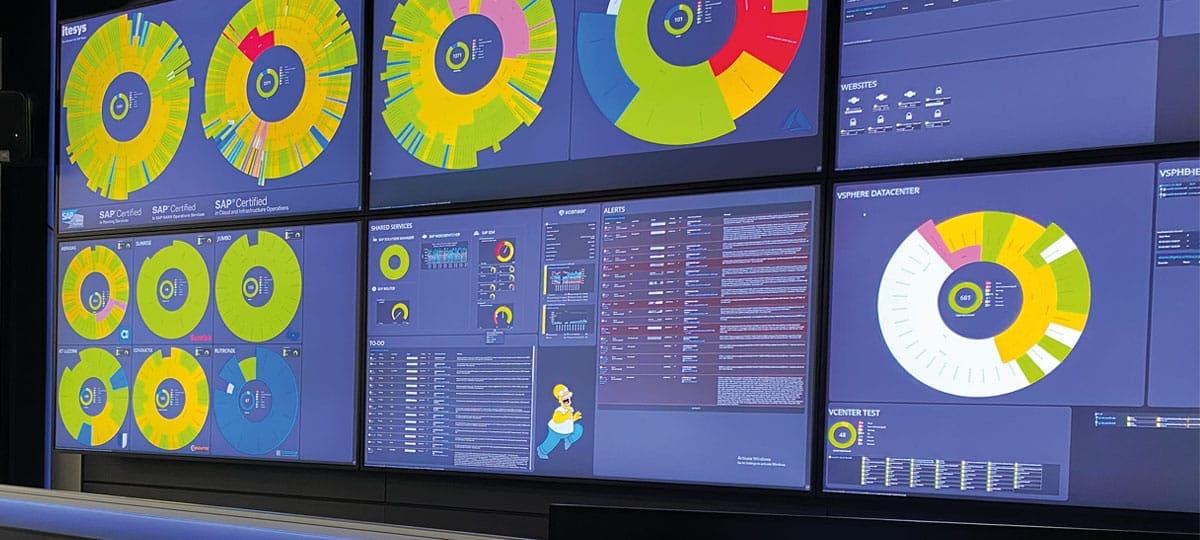Key success factors for the transition and operation of S/4 Hana


When transitioning to S/4 Hana, there is a lot to consider up front
The migration to S/4 Hana needs to be well prepared, as it is fraught with numerous challenges - in terms of architecture, operating model, SAP Basis support or method of migration and corresponding SAP Basis requirements such as SAP Monitoring as well as Application Lifecycle Management (ALM) or SAP Security, to name just a few.
Lack of personnel slows down S/4 Hana transition
This brings sweat to the brow of CIOs and IT managers who are planning a transition. They often have to contend with a strained personnel situation within their IT organization, and recruiting qualified IT personnel is also extremely difficult due to the lack of people on the labor market. In many places, a generational change is taking place in the SAP team, and important SAP expertise is being lost. This circumstance often contributes to the fact that the switch to S/4 Hana is delayed.
Preparation is a key success factor
In order to make the switch to S/4 Hana as smooth as possible, optimal preparation with a clearly structured approach is essential. The most important thing: Get a detailed overview of all areas of the current SAP landscape, such as: SAP release statuses, enhancements, add-ons and databases (SAP/Non SAP), but also RFC interfaces, SAP certificates and especially system utilization.

Include SAP monitoring data
A comprehensive SAP monitoring tool provides important data in advance, displays error states, monitors IDocs, SAP jobs (LongRunners), system logs, parameters according to SAP Security Baseline, encryptions, authorizations, and reports problems automatically in real time so that the in-house or external SAP Basis operation can correct them directly. Monitoring is thus becoming an important discipline. Both the SAP landscape and the infrastructure should be monitored seamlessly, not in silos, but centrally in a single solution. This is where an SAP monitoring solution such as Scansor comes into play (www.scansor.com; SAP add-on for PRTG from SAP Basis professional itesys AG).
It shows the status quo in real time, clearly visualized in a dashboard, and provides a sound basis for all decisions concerning the design and sizing of the future architecture in the run-up to the S/4 transition. It is also recommended for use after the successful transition, because monitoring helps to ensure that the S/4 landscape runs reliably and with high performance. This means that SAP Basis can concentrate all the more on important application-related tasks or activities.
Three common vulnerabilities in the S/4 transition
Unfortunately, both the preparation and the overview of the SAP landscape are often poor. We encounter the following three weak points particularly frequently:
1st forms: a large number of accumulated forms that are no longer all used or needed. Transferring these one-to-one into S/4 Hana involves a great deal of effort and enormous costs. Instead, it is better to check in advance which forms will also be needed in the future and delete what is not needed.
2. add-ons: In terms of add-ons, proprietary developments and individual extensions, several hundred of them are often operated, although only sporadically or not licensed at all. This is unnecessary ballast. It is therefore better to streamline and make it more cost-efficient, and to identify and block or delete add-ons that are no longer used. Caution: Add-ons that continue to be used must be released for the new S/4 Hana target version, otherwise the transition will be delayed by weeks in the worst case and will be expensive.
3. sizing: If the in-memory RAM of the SAP Hana database is oversized, this unnecessarily increases the costs for operation and maintenance. If it is too small, performance and user satisfaction suffer, and in the worst case, there is an "out of memory" and the system shuts down automatically. Sizing the future S/4 Hana system correctly is difficult. Monitoring the workload in advance is therefore highly recommended.
Migration method and preparations
Essentially, two paths lead to the goal: the brownfield approach, i.e., a conversion of the existing system, or the greenfield approach, i.e., a new implementation. Which method is the right one depends on the individual case, and the differences are well known. However, those who opt for a system conversion - the majority of SAP customers, according to the DSAG Investment Report 2022 - must do some preliminary technical work:
- Switch to Unicode and the central business partner (SAP Business Partner) and migrate to the Hana database (if not already done)
- Deploy Adobe Document Services (ADS) for new output management and customization of forms that are still in use.
- Determine future front-end strategy (SAP GUI/SAP Fiori)
- Customize authorizations and roles, best with SAP Identity Management
- Archive data that is no longer needed to minimize expensive Hana working memory
- Determine sizing of Hana database and application servers (RAM, disk space, CPU), taking into account the disaster case and SAP specifications.
- Check code (Custom-Code-Check/Abap Test Cockpit) to clarify the need for adaptation of individual developments and extensions
Special Case S/4 Hana Cloud Editions
Specifically for the S/4 Hana cloud editions for public and private clouds, the Walldorf-based software group entices customers with its full-service offering Rise with SAP. But even with this offering, there are differences between the SAP standard offering and customer requirements, e.g. generating certificate signing requests (CSR), defining security policies or monitoring SAP jobs. When deciding in favor of Rise with SAP, there is also a lot of work to be done in advance. The existing SAP system must be purged and cleaned up, and in-house developments that are to continue to be used must be rebuilt in the medium term on the basis of the SAP Business Technology Platform (SAP BTP) outside the ERP core. This can be closed by an SAP Basis provider who brings the necessary technical know-how and acts as a link and coordinator between the customer and SAP support. To ensure that the interfaces that control the interaction of the new functions and mobile apps with S/4 Hana Cloud are accessible and function smoothly, these must also be monitored seamlessly - for example, with a monitoring tool such as Scansor.

Choose the right SAP operating model
Operate SAP yourself or outsource? These facts help in the decision-making process, because the question of the future operating model and the personnel situation should be clarified at an early stage: on-premises, in the private or public cloud, or hybrid?
1. On-premises operation is ideal for companies that want or need to retain control over their IT infrastructure, hardware and network because they work with particularly sensitive data that must not be taken off-site. On-premises, however, requires trained personnel for SAP operations who can cover the entire range of tasks with specific Hana expertise, from security to regular infrastructure maintenance to auditing. If these resources are lacking, SAP outtasking is the solution.
2. Private cloud operation in SAP outsourcing (SAP infrastructure and basic operation) is the means of choice when the company's focus is on smooth digital processes and high agility with regard to future requirements and developments. In this case, it requires above all an integrated, scalable and highly available hosting infrastructure platform. This should be technologically state of the art and certified by SAP, it must be continuously developed and guarantee legally compliant data storage and business continuity. The SAP Basis provider should support the migration with comprehensive consulting services, implement a customized architecture and ensure that the SAP system and database are configured precisely, the hardware and virtual private network (VPN) are optimally designed and non-SAP solutions are integrated.
3. Public cloud operation on the platform of a hyperscaler such as Google Cloud Platform (GCP), Microsoft Azure or Amazon Web Services (AWS) is recommended if a company wants to network its SAP users across locations and requires short latency times and computing power that can be scaled as required. When rightsizing and rightplacing, these aspects must be considered: the conceptual design of the target landscape, the platform setup, the transition including landing zone installation, data migration and subscription, and the SAP Basis operation.

Conclusion
All models have one thing in common: Existing SAP customers should call in an experienced, qualified SAP Basis partner at eye level, who will support the S/4 Hana roadmap in word and deed and in operation with tailored managed services and custom-fit service level agreements (SLA) as well as 24/7 support to ensure smooth SAP operation. In the course of the S/4 Hana transition, however, application lifecycle management (ALM) and security must not be neglected. As a rule, internal IT has neither the necessary personnel nor the know-how for such a project and operation. The keyword here is a shortage of skilled workers.
Find and choose the right partner
All this shows: The transition to S/4 Hana or S/4 Hana Cloud is a complex undertaking. Especially companies with a lean IT department quickly reach their limits here. Building up internal expertise and personnel, which would be necessary to carry out a changeover on one's own and at the same time ensure smooth and secure SAP operation, is time-consuming and associated with high costs. Instead, it is advisable to work with a reliable SAP technology partner who can support its customers with expertise in terms of preparation, SAP Basis operation, ALM and security. If the SAP landscape is monitored automatically around the clock, nothing stands in the way of a successful transition.







